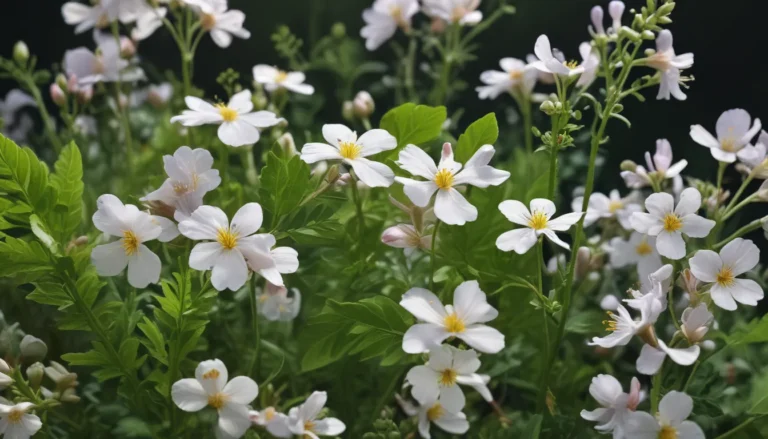The pictures we use in our articles might not show exactly what the words say. We choose these pictures to make you interested in reading more. The pictures work together with the words but don’t take their place. The words still tell you the important facts.
Sycamore maple trees, scientifically known as Acer pseudoplatanus, have entranced nature enthusiasts and arborists with their captivating charm and rich history. In this article, we will explore 20 intriguing facts about the sycamore maple tree, unveiling its unique characteristics, cultural significance, and ecological importance. Whether you are a nature lover, a botany enthusiast, or simply curious about the wonders of the natural world, these insights will deepen your appreciation for this remarkable tree species. Join us on a journey through the enchanting realm of sycamore maple trees as we uncover the secrets and wonders that make them a cherished and vital part of our environment.
Origins and Characteristics of the Sycamore Maple Tree
- Native Habitat: The sycamore maple tree is indigenous to central Europe and western Asia, where it has flourished for centuries, deeply rooted in the regions' landscapes.
- Deciduous Beauty: With a broad, rounded crown, the sycamore maple tree sheds its leaves in the fall, painting the ground with a vibrant palette of colors before regrowing them in the spring.
- Impressive Stature: Standing tall at heights of up to 35 meters, the sycamore maple tree commands attention with its majestic presence in its natural habitat.
- Distinctive Bark: The tree's bark is marked by a patchy appearance, creating a unique pattern that adds to its allure and makes it easily recognizable.
- Palmately Lobed Leaves: The sycamore maple tree's leaves are deeply lobed, resembling the shape of a human hand and contributing to its unmistakable appearance.
Reproduction and Utilization of Sycamore Maple Trees
- Floral Elegance: During the blooming season, the sycamore maple tree showcases clusters of greenish-yellow flowers that add a touch of natural splendor to the environment.
- Winged Seeds: The tree produces winged seeds called samaras, also known as "helicopter seeds," which play a crucial role in its reproduction and propagation.
- Versatile Wood: Renowned for its durability and versatility, the wood of the sycamore maple tree is highly prized for applications ranging from furniture making to crafting musical instruments.
- Medicinal Uses: Throughout history, the sycamore maple tree has been valued for its traditional medicinal properties, with various parts of the tree utilized in herbal remedies and preparations.
Cultural Significance and Environmental Contributions
- Global Expansion: While native to Europe and Asia, the sycamore maple tree has been introduced to other parts of the world, including North America, enriching the global flora across continents.
- Resilience and Adaptability: Thriving in diverse environmental conditions, the sycamore maple tree exemplifies remarkable resilience and adaptability, symbolizing strength in the natural world.
- Biodiversity Support: As a crucial component of ecosystems, the sycamore maple tree provides habitats and sustenance for various organisms, contributing to the intricate web of biodiversity.
- Cultural Symbolism: Embedded in folklore and traditions, the sycamore maple tree holds a special place in the hearts and stories of communities across its native regions.
Aesthetic Value and Inspirational Influence
- Landscaping Elegance: Admired for their striking appearance and ornamental value, sycamore maple trees are often featured in landscaping and horticultural designs, adding elegance to outdoor spaces.
- Shade and Shelter: With their expansive canopies and sheltering qualities, sycamore maple trees offer shade and refuge, making them beloved fixtures in parks and gardens.
- Artistic Inspiration: From evocative paintings to lyrical verses, sycamore maple trees have inspired artists and poets throughout history, leaving a lasting imprint on creative expressions.
Environmental Benefits and Conservation Efforts
- Air Purification: In addition to their visual appeal, sycamore maple trees contribute to environmental well-being through their role in purifying the air and conserving soil integrity.
- Scientific Research: Scientists and conservationists have been captivated by sycamore maple trees, leading to research initiatives and conservation efforts aimed at preserving this remarkable species.
Symbolism and Admiration for the Sycamore Maple Tree
- Enduring Qualities: The sycamore maple tree symbolizes strength, resilience, and natural beauty, leaving a profound impression on those who encounter it.
- Enthusiast's Delight: For nature enthusiasts and arborists, the sycamore maple tree holds a special allure, inspiring admiration and fostering a deep appreciation for the wonders of the natural world.
In conclusion, the sycamore maple tree stands as a remarkable species with both ecological and cultural significance. Its distinctive characteristics, adaptability, and diverse uses make it a valuable asset in landscapes and forests. By recognizing the unique attributes of the sycamore maple tree, we can cultivate a deeper connection with nature and advocate for its preservation for future generations to enjoy.
Frequently Asked Questions
- Ideal Growing Conditions: Sycamore maple trees thrive in moist, well-drained soil and prefer locations with full to partial sunlight, adapting to various soil types and urban environments.
- Pests and Diseases: While generally hardy, sycamore maple trees can be susceptible to issues such as powdery mildew, tar spot, and scale insects, requiring regular monitoring and proper care for their health maintenance.
Our commitment to delivering accurate and engaging content ensures that each fact shared about sycamore maple trees is sourced from real users like you, reflecting a diverse range of insights and information. Trust in our dedication to quality and authenticity as you explore and learn with us.






